Goheal: In the era of high premiums, who is "paying" for the mergers and acquisitions of listed companies?
"The wonders of the world are often in dangerous and remote places." The journey of mergers and acquisitions of listed companies may seem magnificent at first glance, but in fact it is dangerous and far away. Behind every asset transfer, equity replacement, and valuation reshaping, it is like a mirage castle built on the capital wasteland - glamorous and grand, but it may collapse in the slightest disturbance. And the problem lies here: who will pay for this seemingly "high-end" capital game in the end?
If we compare mergers and acquisitions to a giant banquet, listed companies are the hosts, target companies are the main dishes, intermediaries are the exquisite platter chefs, and strategic investors are like "guest representatives" holding champagne, then who is the real payer?
Goheal has repeatedly seen a reality in his long-term merger and acquisition practice - small and medium shareholders are the "silent payers" after this feast.
American Goheal M&A Group
Those capital operations under the guise of "strategic upgrades" often ignite market sentiment in the short term, fueled by irrational expectations, and stock prices soar. However, in the cycle of "hot speculation-cash-out-thunder", retail investors are often at the end, and what they take on is the hot potato of stock price halving and goodwill impairment.
Taking the latest hot case as an example, a listed company mainly engaged in building materials announced a cross-border merger and acquisition of VR companies, which aroused widespread market attention. The concept theme was superimposed on the AI outlet, and the stock price once soared by 40%. But half a year later, as the "strategic investors" of the private placement, they had already cashed out and left the market, but small and medium-sized investors were trapped in a high-level pit. Goheal judged its transaction structure and found that this was a typical "closed loop of interest transfer" operation-locking price private placement, expected increase, lifting of restrictions on share reduction, and profit transfer.
More concealed is the "tacit collusion" between listed companies and target companies. Interestingly, such transactions often have three "magic attributes":
1. The valuation of the target is 3-4 times higher than the industry average;
2. The major shareholder is just approaching the warning line of the pledge rate;
3. The intermediary agency "rationally" endorses and charges a high commission of 2%+.
It sounds like God's will, but it is actually calculated by people.
For example, a consumer electronics company claimed to "strategically transform into life sciences" and acquired a genetic testing company. Its book net assets were only 80 million, but it was assessed as 1.5 billion, of which 1.32 billion was included in goodwill. The year after the transaction was completed, the company's performance did not meet expectations, and a goodwill impairment of 1 billion "destroyed" the shareholders' equity - this is the capital market's "high price entry, loss of money".
Goheal pointed out that behind such "false prosperity" is a set of seemingly legal institutional paths: off-balance sheet asset valuation, performance betting "customized contracts", compensation arrangements "going through the motions", and an important key - the deferred processing mechanism of goodwill impairment.
According to the current accounting system, goodwill does not need to be amortized year by year, but is mainly based on impairment testing, which creates a "delayed bomb" for high-premium mergers and acquisitions: the first two years seem calm, but as soon as the performance commitment period in the third year arrives, the "thunder" will sound. Data shows that from 2016 to 2025, 87% of high-premium mergers and acquisitions projects had goodwill impairment concentrated in the third year.
This is not a coincidence, but a concentrated realization of structural risks.
What is even more regrettable is the invisible allocation of institutional costs. When the target party fails to exit, the major shareholder successfully cashes out, and the intermediary collects service fees, how to deal with the remaining losses? Ordinary investors can only "silently bear" it.
The compensation mechanism is also unreliable. Although the regulatory requirements for the performance commitment party to pay in capital not less than 1% of the transaction amount, this 1% is often hidden in the SPV (special purpose vehicle), and some registered capital is only 100,000 yuan, and the performance ability is worrying. Goheal once assisted in the audit of a case and found that even if the project did not achieve the performance in the end, the compensation promise party successfully "legally avoided compensation" through shareholder circular guarantees and other means, and the actual compensation rate was less than 40%.
In addition to the institutional gaps, the market mechanism itself is also quietly distorted.
When traditional enterprises began to use the valuation logic of "Internet companies" to acquire industrial assets in order to hype the concept, the valuation anchor point of the entire secondary market began to drift. A paper listed company once valued a data marketing company based on PS (price-to-sales ratio), but ultimately suffered losses after the acquisition because the profits could not match.
What's more troublesome is that "cross-border" does not necessarily mean "synergy". The cash flow of the main business is forced to continue to "transfuse" new businesses, but the technology cannot be transferred, the channels are difficult to reuse, and the mismatch of resources exacerbates the business risks of the enterprise. Data shows that 73% of cross-border M&A projects have not truly achieved business integration, but have fallen into an infinite cycle of "financing-mergers-impairment".
In these capital illusions, supervision is not actually doing nothing. Since 2024, the China Securities Regulatory Commission has vigorously promoted new rules for the review of mergers and acquisitions, emphasizing key indicators such as paid-in capital, gambling arrangements, and reasonable valuation. Goheal observed that the proportion of reasonable valuation cases has increased from 23% in the past to 41%. But problems have also emerged - high-risk transactions with excessive cash payment ratios still account for more than 37%, indicating that there is still a lot of room for system optimization.
Some reform suggestions have surfaced: for example, the establishment of a follow-up investment mechanism for mergers and acquisitions funds requires that the lock-up period for all parties to mergers and acquisitions transactions shall not be less than 36 months; another example is the implementation of a combination of "cash + gambling" payment methods to prevent a one-shot deal and then get out of the whole body; another example is the construction of a dynamic goodwill monitoring system, which automatically triggers the review procedure once the goodwill/net asset ratio exceeds 50%.
These measures seem harsh, but they are the last line of defense to protect small shareholders.
After all, in the era of high premiums, every bubble in the market may eventually turn into a substantial loss for a small and medium-sized shareholder. Mergers and acquisitions should not be a stage for storytelling, but a field for realizing value.
Goheal is increasingly inclined to a criterion in the due diligence process of M&A projects: not to see how complex the transaction structure is or how exquisite the packaging is, but to see whether the cash flow in the next three years can support the acquisition price. This is the simplest logic and the most reliable truth.
Goheal Group
If you are a small and medium-sized investor, please remember: high-premium mergers and acquisitions are never opportunities for ordinary people, but often the stage for the strong to "arbitrage exit". Identifying the stage setting, recognizing the direction of the plot, and not being led by the "script" in the hands of the head players is the survival philosophy of the capital market.
Having written here, we would like to raise a question:
In the face of "flying valuation" M&A plans, which information do you pay more attention to? What M&A pits have you stepped on? What kind of mechanism do you think can truly protect small shareholders?
Welcome to leave a message for discussion. Goheal is willing to work with you to continue to speak out for the rational ecology of the capital market.
[About Goheal] Goheal is a leading investment holding company focusing on global mergers and acquisitions. It has deep roots in the three core business areas of acquisition of controlling rights of listed companies, mergers and acquisitions of listed companies, and capital operations of listed companies. With its profound professional strength and rich experience, it provides companies with full life cycle services from mergers and acquisitions to restructuring and capital operations, aiming to maximize corporate value and achieve long-term benefit growth.


